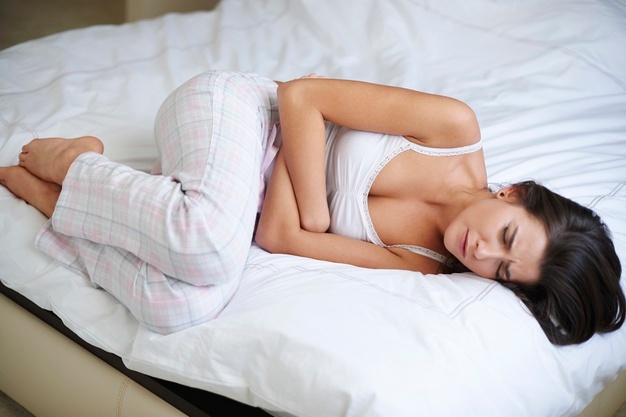
20 Mar What Causes Pelvic Pain in Women
What causes pelvic pain? Many women ask the gynecologist that question because they are experiencing a pounding pain below the belly button. There is even a possibility that this pain could last for about six months or even longer. But do not be scared. Here in this article, Dr. Usha M Kumar – the best Laparoscopic Surgeon in Delhi is trying to raise your awareness of its issue and the situation towards which it might signal.
These situations may or may not be problematic. Menstrual cramps and ovulation are two examples. Women’s pelvic pain can also be a sign of infections or problems with their reproductive system. Pelvic pain can also be a sign of food intolerance (gastrointestinal issues).
Let’s examine all possible causes of pelvic pain in women.
1. Pelvic inflammatory disease
Pelvic inflammatory disease, or PID for short, is an infection in the womb that can further damage the surrounding tissue. An infection can result from bacteria entering the womb from the vagina or cervix.
This disease is also characterized by abnormal vaginal discharge and bleeding in women. In order to effectively treat pelvic pain, this underlying issue needs to be addressed, otherwise it may result in pregnancy complications or even infertility.
2. Urinary tract infections
Infection in the urinary tract occurs when microbes such as bacteria overcome the body’s defence mechanism. The infections can affect the kidneys, bladder, and the tubes that run between them.
Women also experience intense and frequent urges to urinate, along with a painful and burning sensation while urinating. Treatment of this root cause is essential for pelvic pain treatment. There’s nothing to worry about, however, as they can be treated in 2 to 3 days.
3. Menstrual pain and cramps
Menstrual cramps are the most common cause of pelvic pain in women. They usually occur right before a woman’s period begins. During this time, the uterus sheds its lining and has to contract for the purpose, causing pain. During this pelvic pain treatment, a warm heating pad should be placed on the pelvic area. Consult the best Laparoscopic Surgeon in Delhi before taking any ibuprofen or naproxen medications.
4. Endometriosis
One of the most common causes of pelvic pain in women is endometriosis. Endometriosis occurs when the lining of the uterus grows outside of the womb.
When you start your period, this tissue can react to hormonal changes. This can further lead to pelvic inflammation and bleeding. It can be painful.
5. Ectopic pregnancy
In a normal pregnancy, the embryo is implanted inside the uterus (the womb), but in an ectopic pregnancy, it implants itself outside of the uterus and grows. In women, this can cause severe cramps and pelvic pain. Other symptoms include vaginal bleeding, nausea, and dizziness.
6. Pelvic adhesions
A scar tissue is formed when two tissues that shouldn’t be connected join together, also known as an adhesion. Women can suffer from pelvic pain due to the body’s inability to adapt to the new situation. This adhesion could be caused by old infection or endometriosis. To treat pelvic pain, pelvic adhesions must be removed, for which the gynecologist may recommend minimally invasive procedures.
7. Ovulation
Ovulation is also a common cause of pelvic pain in women. However, this time it’s not something too serious. Ovulation occurs when the ovaries release an egg and some fluid. Through the fallopian tube, this egg moves into the uterus. In some cases, when the fluid spreads in the pelvic area, it can result in irritation, leading to pain.
This pain usually occurs during the menstrual cycle on one side of the pelvis. Treatment for pelvic pain is not always necessary since it only lasts for a few minutes in some women. If that’s not the case with you and the pain persists for hours, you should see your gynecologist to confirm that there is no serious problem.
8. Sexually transmitted infections
Women who experience pelvic pain may also be suffering from sexually transmitted infections, such as gonorrhoea or chlamydia. Sexually transmitted infections can also be characterized by pain in the pelvic region, bleeding between periods, unusual vaginal discharge, and painful urination.
9. Ovarian Cysts
Pelvic pain is more likely to occur if you have ovarian cysts, i.e., fluid-filled sacs in your ovaries. The cysts are caused by hormonal changes and may cause chaos in the body and difficulty in releasing the egg, causing pain. Your pelvic pain may be caused by PCOS (polycystic ovarian syndrome), so treating it may help, says best Laparoscopic Surgeon in Delhi.
10. Irritable bowel syndrome
Symptoms of this gut disorder include pelvic pain, bloating, constipation, and diarrhea in women. Usually, the trouble disappears after a bowel movement. IBS and pelvic pain can both be treated with a good diet and lifestyle with minimal stress.
A pelvic region ache, be it intermittent (pain that comes and goes repeatedly) or steady; or pain during intercourse, urination, bowel movements, or after prolonged sitting, may indicate a severe underlying problem. It is important to consult a skilled gynecologist for pelvic pain treatment and to check for other problems.
I, Dr Usha M Kumar has almost 20+ years of experience treating pelvic pain in women. I can provide a diagnosis and treatment to relieve your stress and pain. Please call us for more information!




Sorry, the comment form is closed at this time.